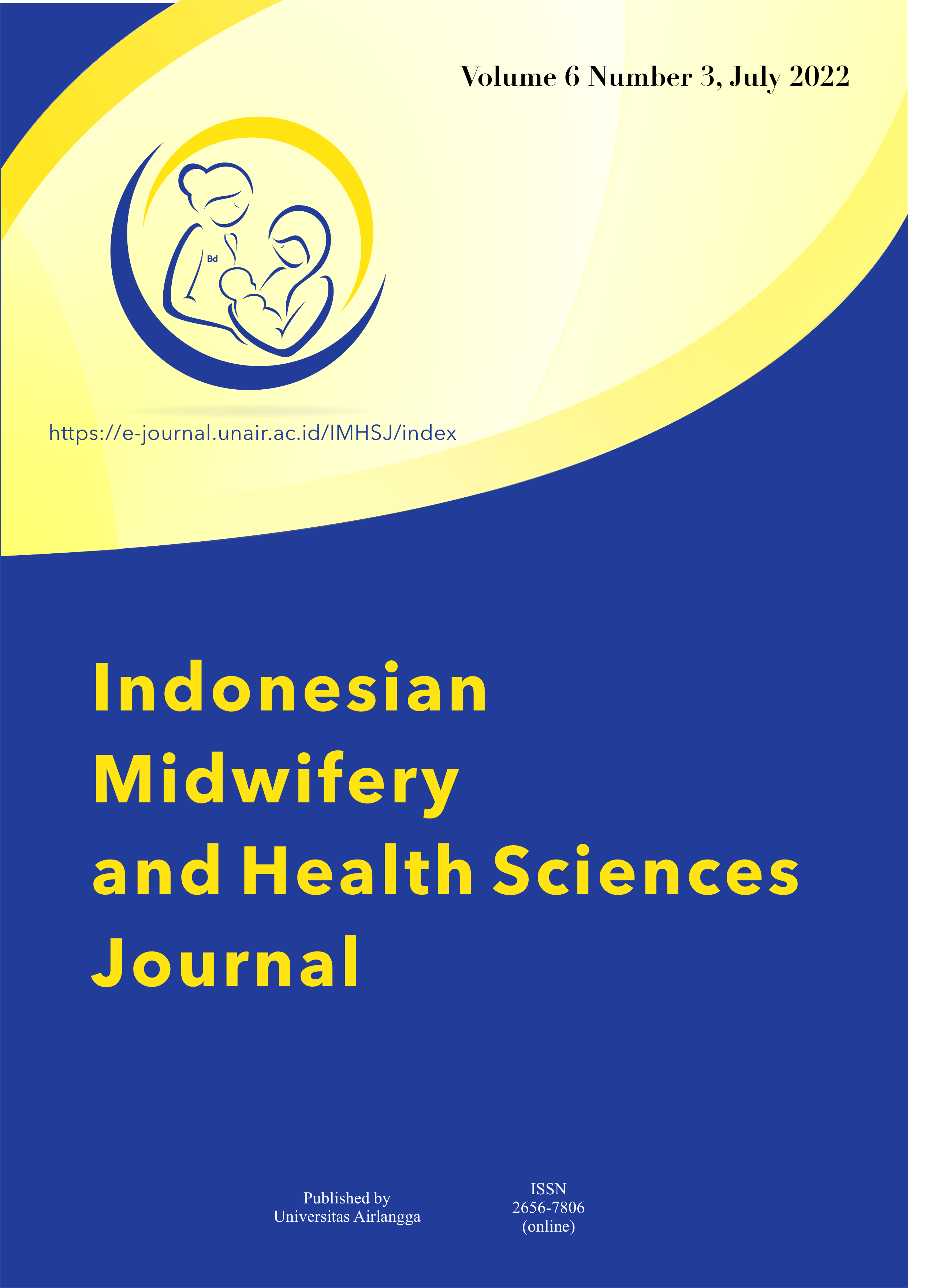THE CORRELATION OF INFORMATION MEDIA ABOUT ADOLESCENT ANEMIA WITH INTEREST IN COMPLEMENTARY OR PHARMACOLOGY THERAPY

Downloads
Background: Factors that cause anemia are diet, blood loss, chronic infection, micronutrients, or congenital abnormalities of red blood cells or Hb. Iron deficiency is a common cause of anemia, iron deficiency occurs when there is inadequate intake and absorption of iron even though iron is very important for the growth of human cells, especially during adolescence. This study aims to analyze the relationship between information media and interest in choosing complementary therapies or pharmacology if symptoms occur or anemia is diagnosed. Methods: This was a cross-sectional analytic research. The research population was all Midwifery Students of the Nahdlatul Ulama Institute of Health Tuban 2nd semester Age 18-23 years, data collection was carried out in April 2022. The sample size was calculated using the slovin formula, obtained 46 samples, side technique using simple random sampling. The instrument used is a questionnaire via google form which has been tested for validity and reliability. Analysis of the data used was the Contingency Coefficient with an alpha value of 0.05 using SPSS. Results: Almost half of the respondents (26.1%) who received information about anemia from electronic media were interested in using pharmacological therapy for anemia and almost half of the respondents (30.4%) who received information from print and electronic media were interested in choosing pharmacological therapy for anemia. Data analysis using contingency coefficients showed an insignificant relationship p = 0.938 (> 0.05) between information media about adolescent anemia and interest in complementary or pharmacology therapies,. Conclusion: possible environmental factors that could influence a person's behavior of interest in choosing complementary or pharmacology therapies.
Keywords: Anemia, complementary, information media, pharmacological therapy
Copyright (c) 2022 Nur Maziyah Hurin'in, Tri Yunita Fitria Damayanti, Nur Cholila

This work is licensed under a Creative Commons Attribution-ShareAlike 4.0 International License.
1. The journal allows the author to hold the copyright of the article without restrictions.
2. The journal allows the author(s) to retain publishing rights without restrictions
3. The formal legal aspect of journal publication accessibility refers to Creative Commons Atribution-Share Alike 4.0 (CC BY-SA).
This Journal (e-ISSN 2656-7806) is licensed under a Creative Commons Attribution-ShareAlike 4.0 International License.
















